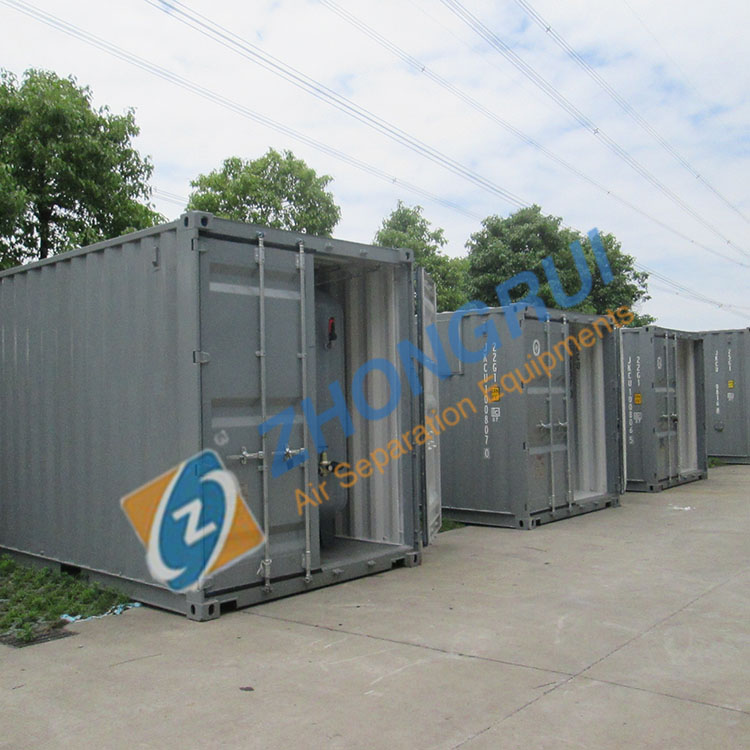News
What caused O₂ shortage and how can you protect your supply chain?
2022-12-14With CO2 being used extensively in the food and beverage industry there is a good chance that your business has felt, and may still be experiencing, the effects of the recent CO2 shortage in Europe.
The CO2 shortage first came to light in mid-June when trade publication Gas world which described it as the “worst supply situation to hit the European carbon dioxide (CO2) business in decades”.
The shortage is the result of a perfect storm of decreased production at a time of exceptionally high demand. CO2 is produced for the most part as a bi-product of ammonia production, used for fertilizer. There is less demand for fertilizer in summer than in winter which is why production plants tend to schedule their maintenance in the summer months. Throughout June and July 8 plants ceased production. With so many plants ceasing production around the same time, there was likely to be an impact on the supply chain, but the situation snowballed due to the cease in production happening at the same time as the World Cup, and at a time when the UK was basking in unusually high temperatures for a prolonged period.

What do the World Cup and warm weather have to do with CO2?
CO2 is used extensively in the food and beverage industry, in food packaging to prevent oxidation to prolong the shelf life of products such as meat, fruit and vegetables, and in the production of beverages such as beer, wine and fizzy drinks, to add fizz, to counter pressure bottles or casks prior to filling, and to push product through to bottling lines. It is even used to stun animals before slaughter for food supply chain.
During the World Cup, sales of beer, wine and fizzy drinks soar. So, the cease in CO2 production in Europe came at a time when the supply chain was experiencing exceptionally high demand. As a result of the CO2 shortage, production of Coca Cola and Heineken’s Amstell and John Smith Extra Smooth beers was interrupted while the companies sourced a secondary CO2 supply, Booker – a supplier to restaurants and bars – rationed customers to 10 cases of beer and Britain’s largest pub operator Ei Group had limited or no supply of certain beers.
The World Cup wasn’t the only factor increasing demand in the alcohol industry. As a result of the unusually warm weather in the UK, Britons nationwide have been seeking out beer gardens to enjoy the sunshine, as well as stocking up on alcohol such as beer and wine to enjoy with a barbeque in the garden.
The perfect barbeque weather also resulted in increased demand for meat and poultry so, in addition to the alcohol industry experiencing demand at the time of the shortage, the meat industry did too, vastly increasing pressure on an already fragile supply chain. Until that pressure was too much to bear.
It didn’t take long for supply to fail to meet demand, and it wasn’t just those companies in the beverage industry like Coca Cola and Heineken which felt the effects. Warburton’s Bakers were forced to temporarily close two of their crumpet production sites as a lack of CO2 halted production altogether. The bakery uses carbon dioxide in its packaging process to prevent mould and prolong the shelf life of the 1.5million crumpets it supplies per week to UK Consumers. Scotland’s largest abattoir was also forced to cease operations as the CO2 shortage left it unable to stun animals before slaughter.

However, the reality is that many of the processes for which CO2 is used in industry don’t have to be solely reliant on the gas. Many of the applications, such as modified atmosphere packaging (to prevent mould and prolong shelf life) pushing product through bottling lines and counter pressuring bottles and casks, simply need an inert gas, and carbon dioxide isn’t the only one available.
Nitrogen can be used for all of these applications and more and, as it can be generated via a nitrogen gas generator and produced on-demand, businesses which use it never have to be at the mercy of supply chain disruption. As nitrogen can be generated, it is also a much more economical solution for businesses which can simply pay upfront for a nitrogen gas generator (which could pay for itself in as little as 6 months) rather than continually purchasing CO2 and factoring those purchases into their annual production costs each year they are trading. In short, not only is nitrogen a viable alternative to CO2 for various applications, it is also a better alternative, allowing users to cut their costs and improve the resilience of their business against external factors such as supply chain disruption.
Although some of the ammonia plants which ceased production have now resumed it and are returning CO2 to the supply chain, the impact of the CO2 shortage could still be felt for the next few weeks, especially by smaller businesses which will be at the back of the queue while suppliers prioritise their largest customers. Also, although this CO2 shortage was the result of a ‘perfect storm’ involving ceased production at a time of vastly increased demand, it cannot be guaranteed that the CO2 supply chain will not falter in future.
Analyst Adam Collins from City analysts Liberum makes an important point, highlighting that the supply of CO2 to the food and beverage industry depends “on the economics of another industry” – European ammonia. Carbon dioxide is a by-product in ammonia production and therefore, it is vulnerable to any upset in the ammonia market.
In order to avoid being at the whim of a wholly unrelated market and vulnerable to unpredictable changes in two supply chains, it is advisable for companies to switch from using carbon dioxide to using a nitrogen gas generator, wherever their processes allow it.


